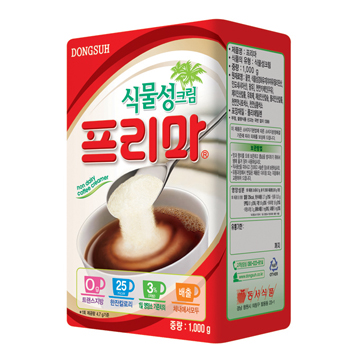
Dongsuh Food announced that since 2012, it has no longer been selling its Frima creamer in Korea, which the company had originally launched in 1974. (Image : Dongsuh Food)
SEOUL, Sept. 30 (Korea Bizwire) – Do you remember the time when creamers, especially one named ‘Frima’, were a necessity along with sugar and coffee?
Although they seem to have disappeared from Korea ever since the ‘americano‘ became the new trend, creamers are popular in Russia and Central Asia, being used not only as a buddy for coffee, but also for baking and cooking.
Dongsuh Food announced that since 2012, it has no longer been selling its Frima creamer in Korea, which the company had originally launched in 1974.
Of course, creamers are still included in other coffee mix sticks produced by the company, but the Frima that was sold in a glass jar disappeared in 2000, not living to see the 21st century.
Frima packets that were sold during holidays as gift sets also disappeared from the market in 2012.
However, according to Dongsuh Food, Frima is leading a new life in Central Asia, as it holds 71 percent of the creamer market share in Kazakhstan. Also, it shares 77 percent of the market in Tajikistan, 56 percent of the market in Uzbekistan, and 54 percent of the market in Kyrgyzstan.
In Russia, creamers are used in the hot chocolate people drink to keep their bodies warm. In Kyrgyzstan, creamers became a substitute for the milk people put in their tea, and in Tajikistan, creamers are used to make bread, as well as in tea.
As a result, sales of Frima have soared to a level 48 times higher than in 1995, when the product was first launched in the region. Over the past 19 years, sales went from $1.1 million to $53 million. In addition, the quantity of Frima exported increased 31.8 percent over the past 10 years, from 72,487 tons in 2003 to 95,528 tons last year.
Dongsuh Food officials are planning to expand their business to western regions of Siberia in the near future.
By Francine Jung (francine.jung@kobizmedia.co.kr)







Frima sales are picking up in asian supermarkets of NZ too, it used to be cheap as chips, now the big packet can be up to twelve bucks! It’s yum tho. Whoever drinks their coffee with it asks for some, and I’ve seen it been used as a replacement for coconut milk in an indonesian curry recipie.